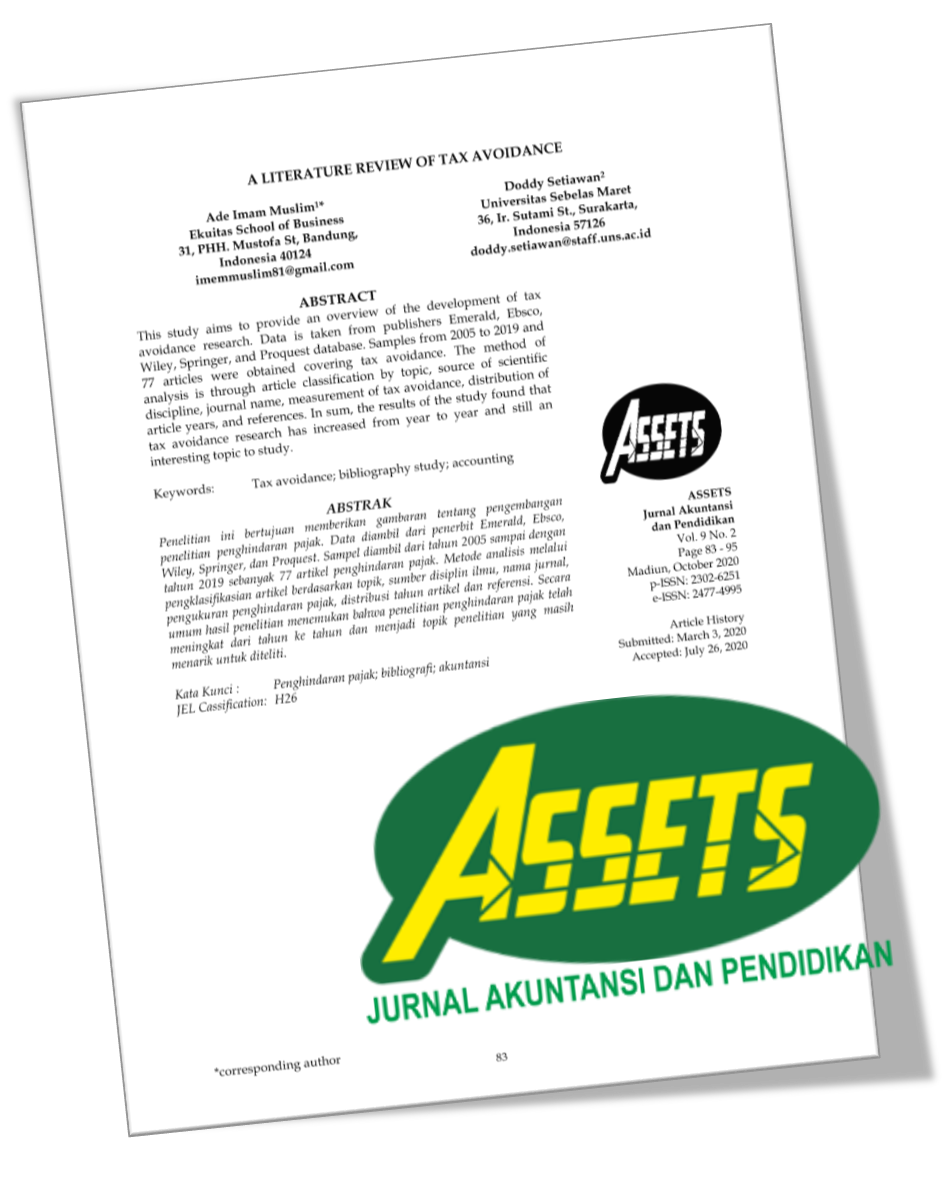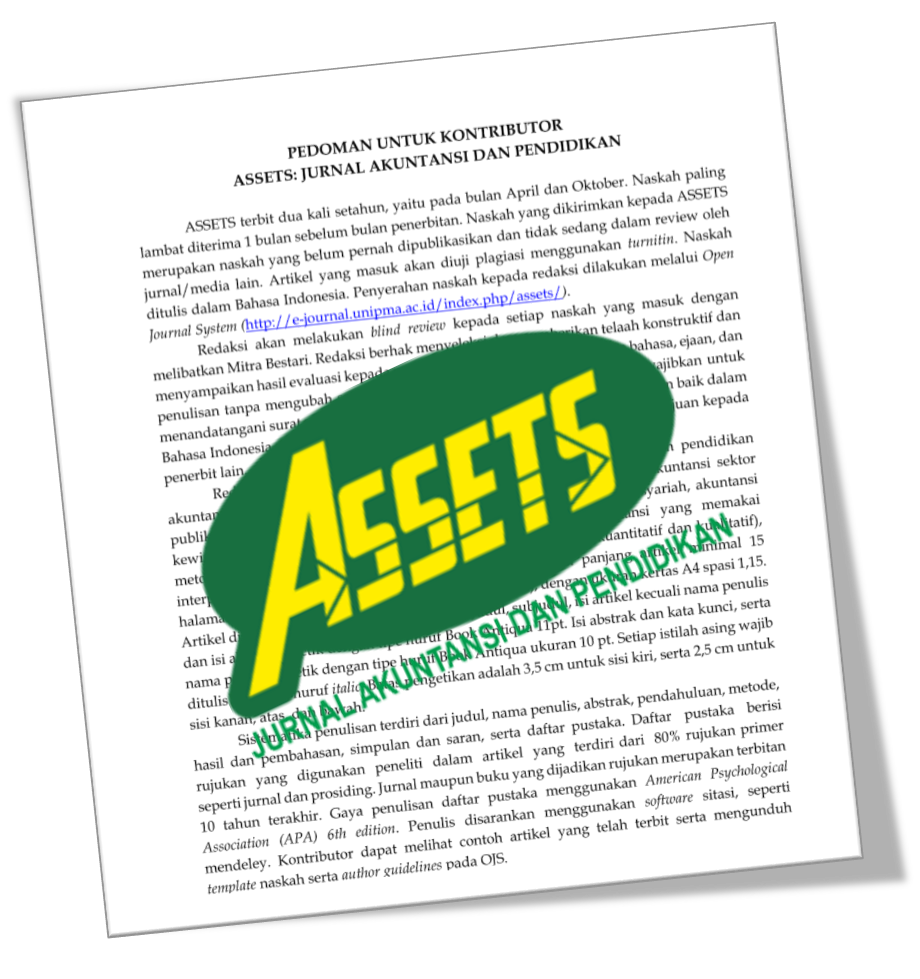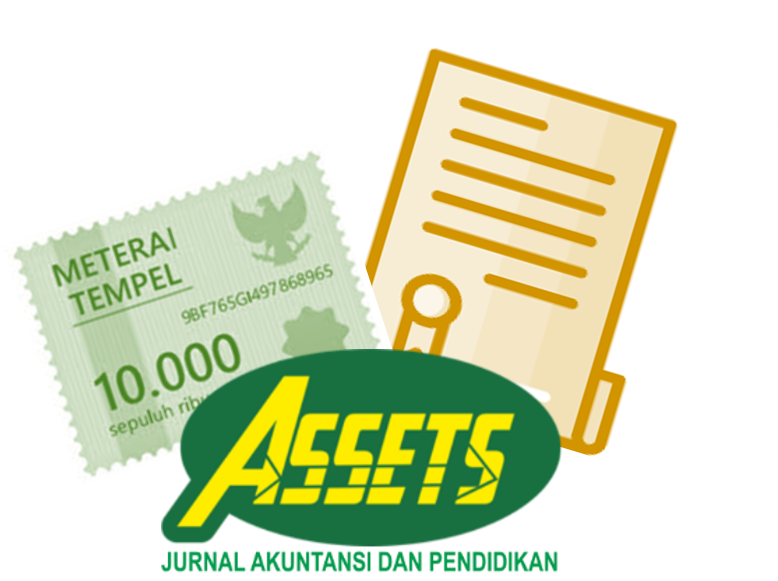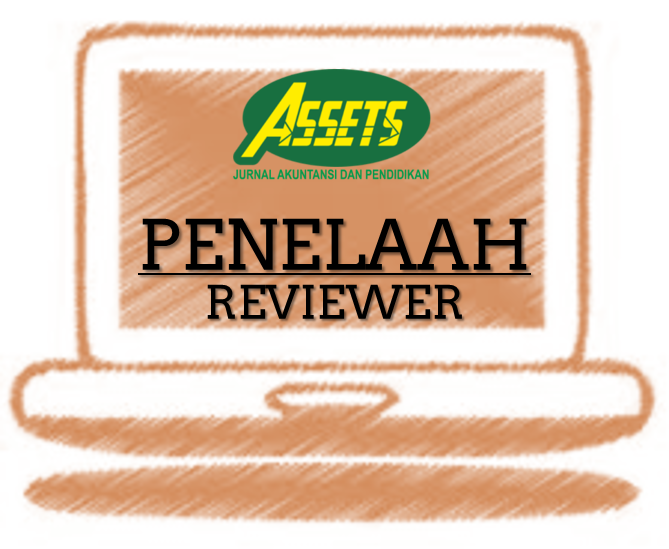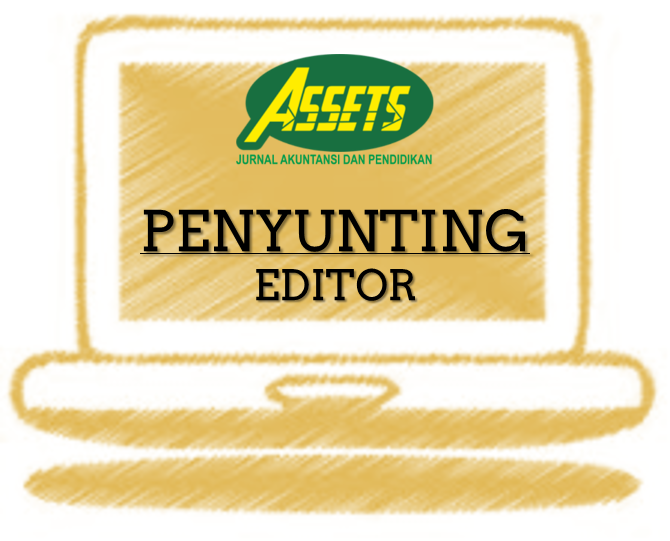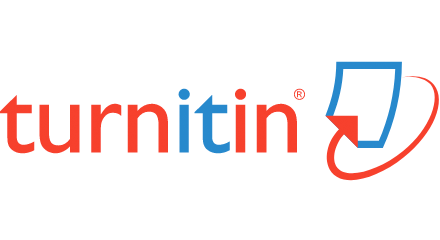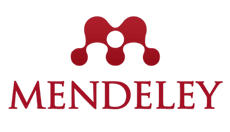Paradox of White Collar Crime and Fraud in Banking: Critical Analysis of Agency Theory and Gone Theory
DOI:
https://doi.org/10.25273/jap.v9i2.6415Keywords:
Bank accounting, Fraud, White corral crime, Consciousness, Enlightment, Akuntansi bank, Kecurangan, Kejahatan kerah putih, Kesadaran, PencerahanAbstract
ABSTRACT
This study aims to criticize the causal relationship between agency theory and GONE theory with Habermas's radical humanist paradigm. Qualitative research methods and in-depth interviews with informants were used in this study. The results of the study inform that agents can be free from pragmatic agency theory through three forms of exemption. The first liberation proposed is to reduce one's greediness. The second release was carried out through an ethical and moral customer due diligence program. The liberation of the third form aims to reduce the rationality of economic relations that tend to prioritize the needs of individuals.
ABSTRAK
Penelitian ini bertujuan untuk mengkritisi hubungan kausalitas antara agency theory dan GONE theory dengan paradigma radical humanis Habermas. Metode penelitiaan kualitatif dan wawancara mendalam dengan informan digunakan dalam penelitian ini. Hasil penelitian menginformasikan bahwa agent dapat terbebaskan dari penerapan agency theory yang bersifat pragmatis melalui tiga bentuk pembebasan. Pembebasan pertama yang diusulkan adalah mereduksi sifat serakah pada diri seseorang. Pembebasan bentuk kedua dilakukan melalui program customer due diligence yang beretika dan bermoral. Pembebasan bentuk ketiga bertujuan untuk mereduksi adanya rasionalitas hubungan ekonomi yang cenderung mementingkan kebutuhan individu.
Downloads
References
Azam, M. R. (2018). Theory Application: Why People Commit Fraud. International Journal of Management, Accounting & Economics, 5(1), 54-65.
Badua, F. (2019). Lies, Sex, and Suicide: Teaching Fundamental Accounting Concepts with Sordid Tales from the Seamier Side of Accounting History. Accounting Historians Journal, 46(2), 53-59.
Baer, M. H. (2018). Sorting Out White-Collar Crime. Texas Law Review, 97(2), 225-283.
Berghoff, H., & Spiekermann, U. (2018). Shady business: On the history of white-collar crime. Business History, 60(3), 289-304.
Bologna, J., Lindquist, R. J., & Wells, J. T. (1993). The Accountant's Handbook of Fraud and Commercial Crime New York: Wiley.
Bukhori, B. (2012). Hubungan Kebermaknaan Hidup dan Dukungan Sosial Keluarga dengan Kesehatan Mental Narapidana. Jurnal Ad-Din, 4(1), 1-19.
C.Jensen, M., & H.Meckling, W. (1976). Theory of the firm: Managerial behavior, agency costs and ownership structure. Journal of Financial Economics, 3(4), 305-360.
Donaldson, T., & Preston, L. E. (1995). The stakeholder theory of the corporation: Concepts, evidence, and implications. Academy of Management Review, 20(1), 65-91.
Earnshaw, E. L. (2004). Religious Oreientation and Meaning in Life: An Exploratory Study. MWSC Dept of Psychology Central Methodist College.
Fadhli, M., & Subandi. (2020). Perubahan Makna Hidup Warga Binaan Tindak Pidana Korupsi di Lembaga Pemasyarakatan X. Psychopolytan: Jurnal Psikologi, 3(2), 1-12.
Frankl, V. E. (2003). Logoterapi: Terapi Psikologi Melalui Pemaknaan Eksistensi. Yogyakarta: Kreasi Wacana.
Frankl, V. E. (2017). Man’s Search for Meaning. Jakarta: Noura.
Fridayanti. (2013). Pemaknaan hidup dalam kajian psikologi. Psikologika, 18(2), 1-12.
Garnasih, Y. (2013). Penanganan Kejahatan Aliran Dana Perbankan, Korupsi dan Pencucian Uang. Legalitas, IV(1), 22-34.
Gonzalez, G. C., & Hoffman, V. B. (2018). Continuous Auditing's Effectiveness as a Fraud Deterrent. Auditing: A Journal of Practice & Theory, 37(2), 225-247.
Hariyadi, D. (2019). Diduga Tilep Uang, Teller BRI Dijerat Pidana Pencucian Uang. Retrieved from bisnis.tempo.com
Hayashi, F. (2019). Payment Card Fraud Rates in The United States Relative to Other Countries After Migrating to Chip Cards. Economic Review, 104(4), 23-40.
Hikam, H. A. A. (2018). Bank Terbesar di Jerman Tersandung Kasus Pencucian Uang. Retrieved from finance.detik.com
Iwan. (2014). Menelaah Teori Kritis Jurgen Habermas. Jurnal Edueksos, 3(2), 145-165.
J.R.Saroinsang, S. (2014). Konsep Strategis Perbanakan Dalam Pencegahan Tindak Pidana Pencucian Uang. Jurnal Edisi Khusus, II(2), 50-59.
Karyono. (2013). Forensic Fraud. Yogyakarta: Andi.
Ketz, J. E. (2019). Confessions of an Accounting Critic. CPA Journal, 89(3), 10-12.
Lai, T. K., Lei, A. C. H., & Song, F. M. (2019). The Impact of Corporate Fraud on Directorâ€Interlocked Firms: Evidence From Bank Loans. Journal of Business Finance & Accounting, 46(2), 32-67.
Lan, L., & Heracleos, L. (2010). Rethinking Agency Theory: The View From Law. Academy of Management Review, 35(2), 294-314.
Mathilda, F. (2013). Crime of Money Laundering in Banking Sector. Sigma-Mu 5(2), 55-67.
Metekohy, E. Y., & Nurhayati, I. (2012). Efektivitas Prinsip Mengenal Nasabah Pada Bank Sebagai Salah Satu Upaya Mencegah Tindak Pidana Pencucian Uang. Jurnal Ekonomi dan Bisnis, 11(1), 23-26.
Mintchik, N., & Riley, J. (2019). Rationalizing Fraud. CPA Journal, 89(3), 44-50.
Mira, R. (2014). Upaya Pencegahan Pemberantasan Praktek Money Laudering oleh Perbankan Melalui Transfer Dana. Jurnal Edisi Khusus, 2(2), 60-69.
Omika dewi, I. G. A. A. (2010). Dialektika dan Refleksi Kritis Realitas “Sustainability†dalam Praktik Sustainability Reporting: Sebuah Narasi Habermasian. Jurnal Akuntansi dan Keuangan Indonesia, 7(2), 139-152.
Pluchart, J.-J. (2019). Le Triangle de La Fraude. Vie et Sciences de l'Entreprise, 1(207), 83-97.
Rechtman, Y. M. (2020). The Past, Present, and Future of Forensic Accounting. CPA Journal, 90(3), 10-12.
Reurink, A. (2018). Financial Fraud: a Literature Review. Journal of Economic Surveys, 32(5), 1292-1325.
Ruan, W., Xiang, E., & Ma, S. (2018). Lending to Private Firms: Evidence from China on the Role of Firm Openness and Bribery. Chinese Economy, 51(1), 1-19.
Salama, N. (2014). Motif dan proses psikologis korupsi. Jurnal Psikologi, 41(2), 149-164.
Sawarjuwono, T. (2005). Bahasa Akuntansi Dalam Praktik: Sebuah Critical Accounting Study. TEMA (Telaah Ekonomi, Manajemen, dan Akuntansi), 6(2).
Shonhadji, N., & Maulidi, A. (2020). Isitsuitable for your local governments? Acontingency theory-based analysis on the use of internal control inthwarting white-collarcrime Journal of Financial Crime, March (3)(1), 1-17.
Sridharan, U. V., & Hadley, L. U. (2018). Internal Audit, Fraud and Risk Management at Wells Fargo. International Journal of The Academic Business World, 12(1), 49-53.
Sun, Y., Wang, L., Jiang, J., & Wang, R. (2018). Your love makes me feel more secure: Boosting attachment security decreases materialistic values. International Journal of Psychology, 2(1), 1-12.
Supraja, M. (2018). Pengantar Metodologi Ilmu Sosial Kritis Jurgen Habermas
Yogyakarta: Gajah Mada University Press.
Taylor, J. (2018). White-collar crime and the law in nineteenth-century Britain. Business History, 60(3), 343-360.
Weirich, T. R., & Churyk, N. T. (2018). AIM Corporation: A Business Fraud Case Study. Journal of Forensic Accounting Research, 3(1), 37-51.
Yoon, K. S., & Jun, J. (2019). Liability and Antifraud Investment In Fintech Retail Payment Services. Contemporary Economic Policy, 37(1), 181-194.
Downloads
Additional Files
Published
Issue
Section
License
Perjanjian Lisensi dan Hak Cipta
Saat mengirimkan naskah ke jurnal, penulis menyatakan bahwa:
- Mereka diberi wewenang oleh rekan penulisnya untuk masuk ke dalam perjanjian ini.
- Karya yang dimaksud belum pernah diterbitkan secara resmi sebelumnya, kecuali dalam bentuk abstrak atau sebagai bagian dari kuliah, resensi, tesis, atau overlay jurnal yang diterbitkan.
- Karya yang dimaksud tidak sedang dipertimbangkan untuk diterbitkan di tempat lain,
- Publikasi karya yang dimaksud telah disetujui oleh semua penulis dan oleh otoritas yang bertanggung jawab - secara tahu sama tahu atau eksplisit - dari lembaga tempat pekerjaan itu dilakukan.
- Mereka mengamankan hak untuk mereproduksi materi apa pun yang telah diterbitkan atau dilindungi hak cipta di tempat lain.
- Mereka menyetujui lisensi dan perjanjian hak cipta berikut.
Hak Cipta
Penulis yang menerbitkan dengan ASSETS: Jurnal Akuntansi dan Pendidikan menyetujui persyaratan berikut:
- Penulis mempertahankan hak cipta dan memberikan jurnal hak publikasi pertama dengan karya yang secara bersamaan dilisensikan di bawah Lisensi Atribusi Creative Commons (CC BY-SA 4.0) yang memungkinkan orang lain untuk berbagi karya dengan pengakuan kepenulisan karya dan publikasi awal di jurnal ini.
- Penulis dapat masuk ke dalam pengaturan kontrak tambahan yang terpisah untuk distribusi non-eksklusif dari versi jurnal yang diterbitkan dari karya tersebut (misalnya, mempostingnya ke repositori institusional atau menerbitkannya dalam sebuah buku), dengan pengakuan publikasi awalnya di jurnal ini.
- Penulis diizinkan dan didorong untuk memposting karya mereka secara daring (misalnya di repositori institusional atau di situs web mereka) sebelum dan selama proses pengiriman, karena dapat menghasilkan pertukaran yang produktif, serta kutipan lebih awal dan lebih besar dari karya yang diterbitkan.
License and Copyright Agreement
In submitting the manuscript to the journal, the authors certify that:
- Their co-authors authorize them to enter into these arrangements.
- The work described has not been formally published before, except as an abstract or part of a published lecture, review, thesis, or overlay journal.
- That it is not under consideration for publication elsewhere,
- That its publication has been approved by all the author(s) and by the responsible authorities – tacitly or explicitly – of the institutes where the work has been carried out.
- They secure the right to reproduce any material already published or copyrighted elsewhere.
- They agree to the following license and copyright agreement.
Copyright
Authors who publish with ASSETS: Jurnal Akuntansi dan Pendidikan agree to the following terms:
- Authors retain copyright and grant the journal right of first publication with the work simultaneously licensed under a Creative Commons Attribution License (CC BY-SA 4.0) that allows others to share the work with an acknowledgment of the work's authorship and initial publication in this journal.
- Authors can enter into separate, additional contractual arrangements for the non-exclusive distribution of the journal's published version of the work (e.g., post it to an institutional repository or publish it in a book), with an acknowledgment of its initial publication in this journal.
- Authors are permitted and encouraged to post their work online (e.g., in institutional repositories or on their website) before and during submission, as it can lead to productive exchanges and earlier and more extraordinary citations of published work.

ASSETS: Jurnal Akuntansi dan Pendidikan is licensed under a Creative Commons Attribution-ShareAlike 4.0 International License.


